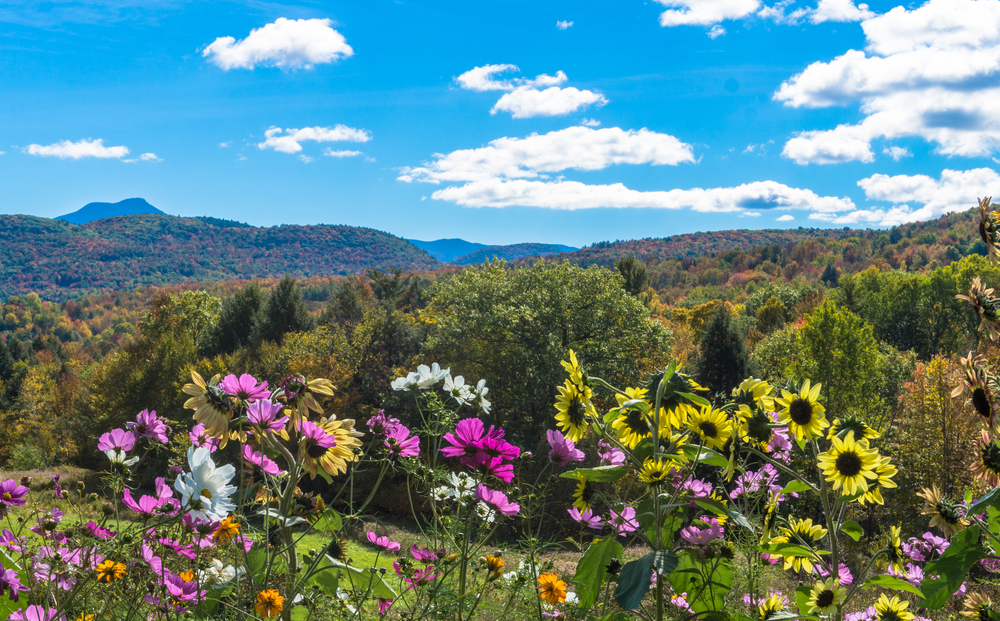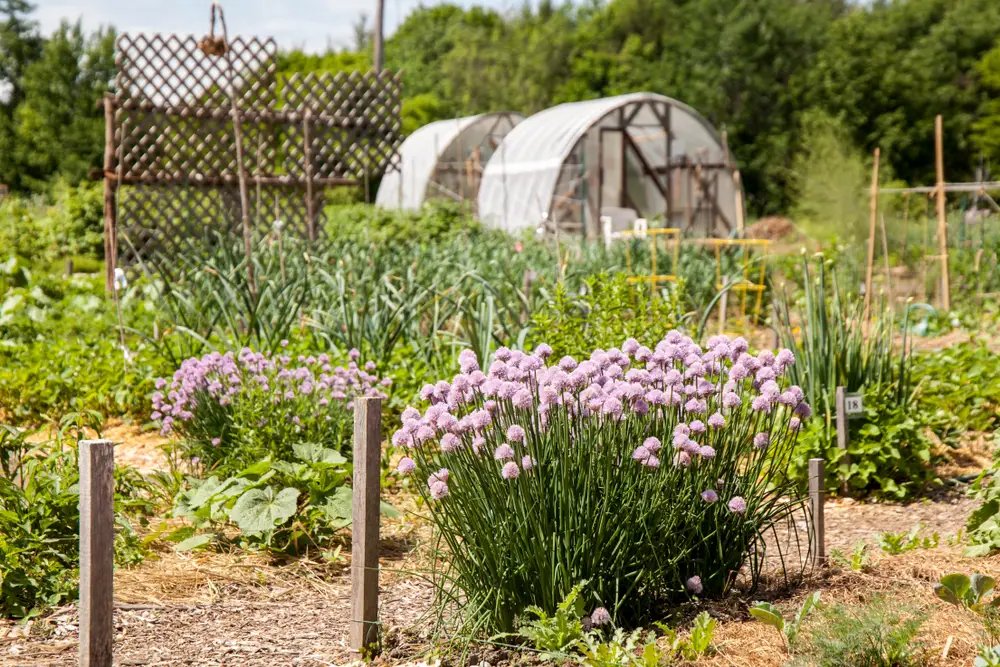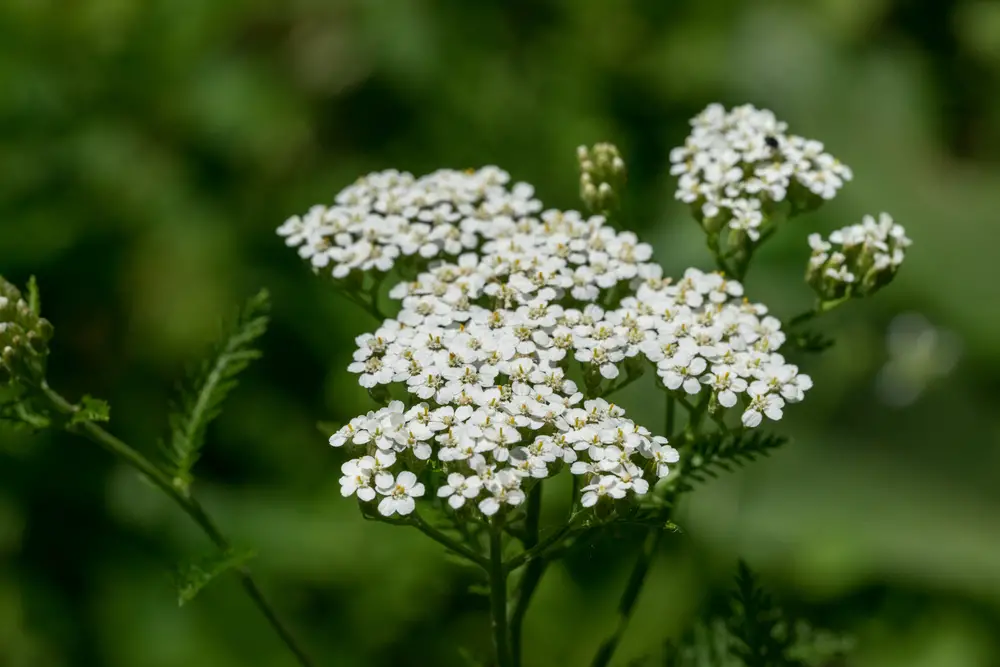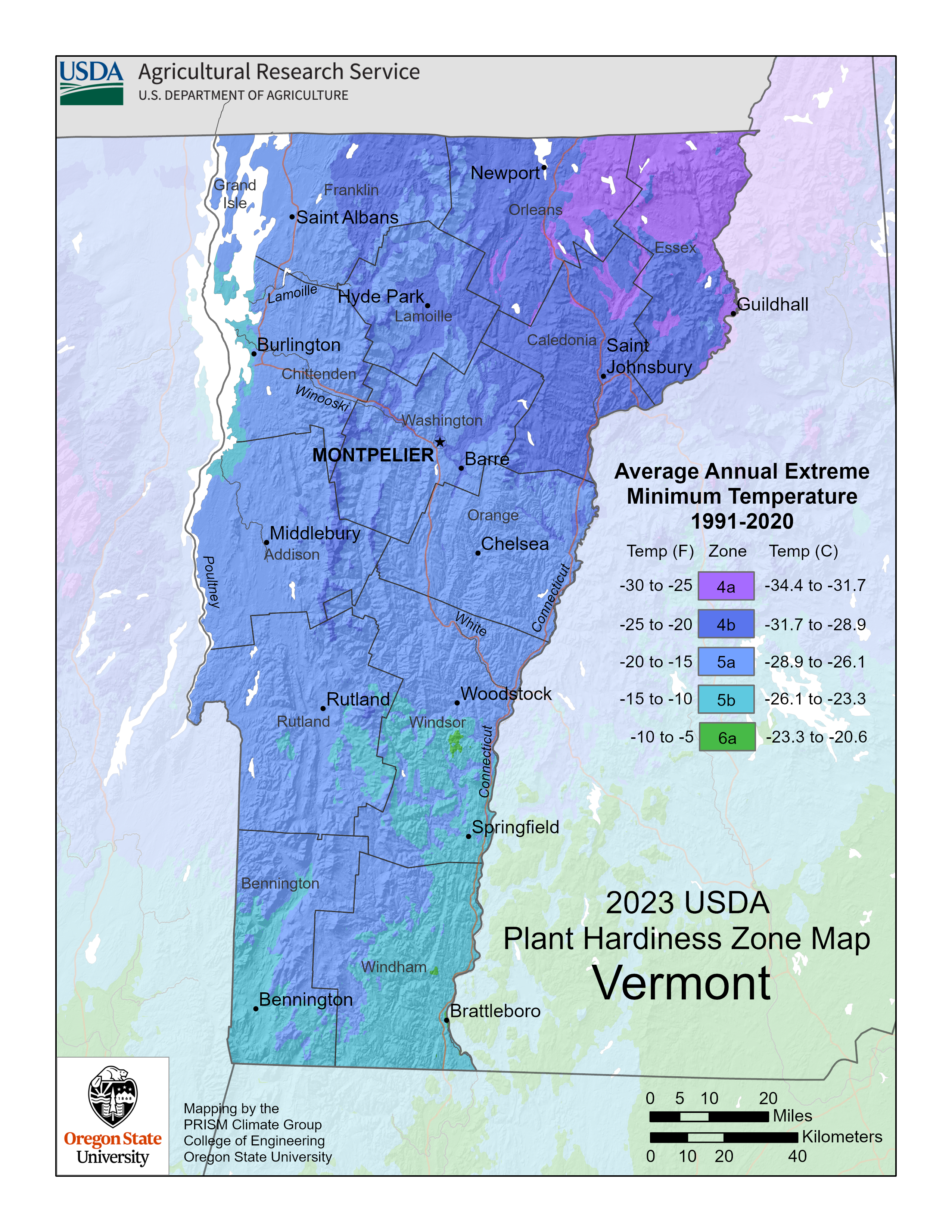Vermont Plant Hardiness Zones
| USDA Hardiness Zone | Average Minimum Winter Temperature Range Fahrenheit (°F)Celsius (°C) | Average Last Frost Date In Spring (Beginning Of The Growing Season) | Average First Frost Date In Autumn (End Of The Growing Season) |
|---|---|---|---|
| 4a | -30°F to -25°F -34.4°C to -31.7°C | May 21st – May 31st | September 21st – September 30 |
| 4b | -25°F to -20°F -31.7°F to -28.9°C | May 21st – May 31st | September 21st – September 30th |
| 5a | -20°F to -15°F -28.9°C to -26.1°C | May 21st – May 31st | September 21st – September 30th |
| 5b | -15°F to -10°F -26.1°C to -23.3°C | May 21st – May 31st | October 11th – October 20th |
| 6a | -10°F to -5°F -23.3°C to -20.6°C | May 21st – May 31st | October 11th – October 20th |
Vermont Growing Conditions

General Climate
Vermont’s climate varies with latitude and elevation.
The northern part of the state sees cooler temperatures than the south. Temperatures also drop incrementally as you go up in elevation.
Vermont plant hardiness zones include a small section of 4a in the northeast corner.
The state’s central portion is classified as 4b and 5a, and the southern part is primarily 5b.
There are a few small pockets of 6a in the southern part of the state as well.
| Area | Climate | Details |
|---|---|---|
| Champlain Valley | Wet continental | Lake Champlain has a buffering effect on the weather, and areas located nearby are somewhat warmer as a result. |
| Northeast Kingdom (rural northeast) | Wet continental | The “Northeast Kingdom” averages 10°F (5.6°C) colder than the southern portion of the state during winter. |
| Southern Vermont | Wet continental | Southern Vermont is the warmest part of the state. Most areas are zone 5a or 5b. There are even a few pockets of zone 6a. Mountain communities are cooler. |
Microclimates
USDA plant hardiness zones (including Vermont plant hardiness zones) are an important starting point for your garden, but you’ll also need to consider microclimates.
Microclimates are areas where specific conditions create a climate different from the climate they’re situated in.
Buildings, fences, paved areas, or short hills and valleys can create these microclimates.
They can be as small as a space in your backyard or as large as a city.
In other words, learn about your local conditions from local experts to see if your garden falls into a microclimate.
Extreme Weather
Vermont routinely experiences extreme weather events in the form of snow, ice, and rain storms.
With high precipitation levels, flooding is the number one environmental hazard Vermont contends with.
Though flooding events are not new to Vermont, as climate change has resulted in the increased development of unsettled weather, Vermont has struggled to mitigate catastrophic damage caused by it.
The two factors that put Vermont at risk of flooding are the region’s mountains, which concentrate runoff precipitation and make water drainage precarious, and its proximity to storms moving through the Atlantic coast (namely hurricanes).
Growing Season
Vermont’s growing season extends from late May to mid-September and -October (depending on which part of the state and USDA hardiness zone you’re in).
Generally speaking, the northern part of the state is cooler than the south. Still, variability in topographic elements (such as Lake Champlain, which has a buffering effect on weather in its proximity, for example) affects temperatures differently depending on the region.
In addition to identifying your hardiness zone and following recommendations, it is helpful for gardeners to pay attention to yearly environmental variability through weather forecasts and connect with other gardeners in their communities to share Vermont-specific gardening tips.
Vermont has a long-standing agricultural history. Given the short growing season and climatic variability, gardeners in Vermont are particularly skilled at adapting to conditions as needed.
Vermont Gardening Tips

Plant The Right Plants At the Right Time
While you’re always advised to choose local varieties of plants because they are best adapted to their specific environment, this may be of particular use in Vermont. With only 3-4 months of frost-free growing and variable conditions, Vermont gardeners like you can use all the help they can get.
Though Vermont’s growing season is short, summers are warm, and the area supports the growth of a wide range of plants.
Plant the hardiest vegetables between 4 and 6 weeks before the last frost date in the spring. You can seed onions, potatoes, spinach, peas, and lettuce right into your garden at this time. You can plant transplants of broccoli, cabbage, and asparagus as well.
Approximately 2 weeks prior to the last frost date in the spring, you can seed frost-tolerant vegetables such as carrots, beets, and radishes in your garden.
Wait until all risk of frost has passed to seed tender vegetables such as squash, beans, and corn. This is the time you can plant out tomato seedlings as well.
Once temperatures have warmed to be consistently above 50°F (10°C), you are safe to plant heat-loving vegetables such as peppers and eggplant as well as vining plants like cucumbers, melons, and pumpkins.
Pay attention to how many days each variety needs to mature and either start seeds indoors or purchase local seedlings, if necessary.
You can also use cold frames or greenhouses to extend your growing season beyond Vermont’s frost-free window.
Adapt Your Garden To Vermont Variable Weather
As you may already know, living in Vermont means adapting your garden to variable weather conditions. This, of course, makes gardening there a challenge.
But you have options.
You can use raised beds and specialized drainage plans to mitigate flooding.
You can use water catchment systems (a system to catch and use rainwater) to support growth during drier years.
You can use container gardening, cold frames, and greenhouses to create flexibility and lengthen growing throughout all but the coldest months.
Disease and Pest Prevention
Given high levels of precipitation, Vermont gardeners are advised to pay special attention to methods of preventing disease and pests that can be destructive to gardens.
Choose varieties that have been bred for disease resistance.
If transplanting, select and plant out only the healthiest plants.
Use barriers such as tin cans (place in the soil around the roots of plants while transplanting) to stop cutworms from feeding on and destroying roots.
You can place floating row cover over freshly transplanted plants to keep pests out. Remember to remove this covering when plants are flowering, so pollinators have access and can ensure good production.
Planning gardens with adequate spacing to ensure good airflow can go a long way toward helping alleviate plant disease and pests in wet seasons.
Consult With Local Professionals
Consulting with local gardening professionals allows you to benefit from their experience with your area’s conditions, the plants that do well there, and overall best practices.
Vermont Plant Suggestions

Trees
- Red Maple (Acer rubrum)
- Eastern Hemlock (Tsuga canadensis)
- Sugar Maple (Acer saccharum)
Shrubs
- Red Osier Dogwood
- Downy Serviceberry (Amelanchier arborea)
- Indigo Bush (Amorpha fruiticosa)
Flowers
- Meadow Anemone (Anemone canadensis)
- White Yarrow (Achillea millefolium)
- New England Aster (Aster novae-angliae)
Vegetables
- Peas (Pisum sativum)
- Lettuce (Lactuca sativa)
- Beans (Phaseolus vulgaris)
Herbs
- Chives (Allium schoenoprasum)
- Red clover (Trifolium pratense)
- Mint (Mentha spicata)
Fruits
- Apples (Malus domestica)
- Blueberries (Vaccinium corymbosum)
- Black raspberries (Rubus occidentalis)
Succulents
- Hens and Chicks (Sempervivum tectorum)
- Golden Glow Sedum (Sedum adolphi)
- Purple Delight Graptopetalum (Graptopetalum paraguayense)

